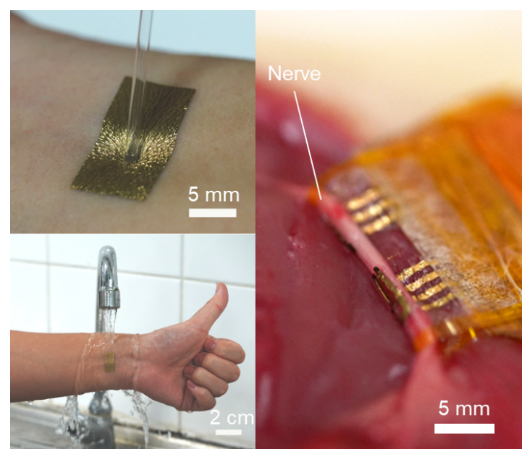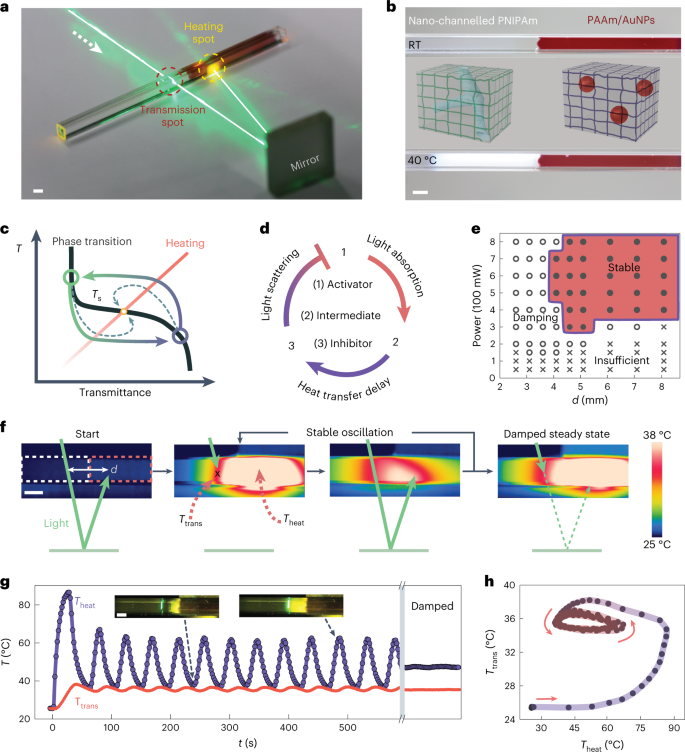2022-11-22 スイス連邦工科大学ローザンヌ校(EPFL)
<関連情報>
- https://actu.epfl.ch/news/steerable-soft-robots-could-enhance-medical-applic/
- https://onlinelibrary.wiley.com/doi/10.1002/advs.202204016
ソフトロボティクスのための高集積マルチマテリアルファイバー Highly Integrated Multi-Material Fibers for Soft Robotics
Andreas Leber,Chaoqun Dong,Stella Laperrousaz,Hritwick Banerjee,Mohamed E. M. K. Abdelaziz,Nicola Bartolomei,Bastien Schyrr,Burak Temelkuran,Fabien Sorin
Advanced Science Published: 22 November 2022
DOI:https://doi.org/10.1002/advs.202204016

Abstract
Soft robots are envisioned as the next generation of safe biomedical devices in minimally invasive procedures. Yet, the difficulty of processing soft materials currently limits the size, aspect-ratio, manufacturing throughput, as well as, the design complexity and hence capabilities of soft robots. Multi-material thermal drawing is introduced as a material and processing platform to create soft robotic fibers imparted with multiple actuations and sensing modalities. Several thermoplastic and elastomeric material options for the fibers are presented, which all exhibit the rheological processing attributes for thermal drawing but varying mechanical properties, resulting in adaptable actuation performance. Moreover, numerous different fiber designs with intricate internal architectures, outer diameters of 700 µm, aspect ratios of 103, and a fabrication at a scale of 10s of meters of length are demonstrated. A modular tendon-driven mechanism enables 3-dimensional (3D) motion, and embedded optical guides, electrical wires, and microfluidic channels give rise to multifunctionality. The fibers can perceive and autonomously adapt to their environments, as well as, probe electrical properties, and deliver fluids and mechanical tools to spatially distributed targets.




このロボットをカテーテルとして使用すると、遠隔操作で目的地に誘導でき、半自主制御により自ら進んで行くことも可能である。
研究者らは、光ファイバーケーブルの製造によく用いられる熱延伸プロセスで繊維を作製した。
材料の特性、延伸速度、温度を適切に設定することで、研究チームは、繊維にロボット機能を持たせるために必要な、繊維の中にミクロン単位で注意深く配置された連続チャンネルを確実に作り出すことができた。
ファイバーには、チャンネル以外にも、熱延伸プロセスを用いてさまざまな要素を組み込むことができる。例えば、スマートカテーテルで定評のある、チャンネルに導入された1本または数本の腱をモーターで引っ張れば、医師はファイバーの端の向きを制御して体内を誘導することができる。
腱に加えて、光ガイド、電極、マイクロチャネルを組み込むことができ、薬物送達、画像処理、電気記録・刺激など、ロボット工学や医療用途で一般的に使用されるツールを実現できる。
内蔵された光ガイドによって、ファイバーは視覚を獲得することができる。ファイバーは、軌道上の障害物を検知・回避し、空洞などの目標物を自力で見つけることさえできる。
研究者たちが使っているのは光ファイバー製造技術で、非常に簡単に作ることができる。一晩で数百キロメートルの光ファイバーを作ることができる。その結果、私たちの製造方法は、これまでにない高度な機能性を兼ね備えたソフトカテーテルのような構造を、新規かつ拡張性のある方法で作ることができるようになった。